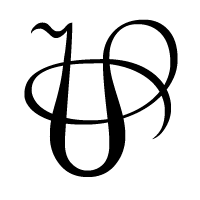
 The
Nitlaki emerged from one of the post-Shoukakegawan timelines where the
west solidified into a rigid German-roman empire and the industrial revolution
occurred far later, in the 2700’s in the Islamic cultures of Australia
and Indonesia. Humanity underwent a technological singularity and began
to spread across the universe. Although the dominant philosophy was a
strongly progressive ambition to remake the universe into the image of
humanity and its AI creations, some groups disagreed. When phasing was
discovered explorers from the timeline visited Ex, and after they brought
back information about the true state of the universe some of the skeptics
– calling themselves the Nitlaki – settled in Ex. The Nitlaki are formally
a member of NRC but in practice independent.
The
Nitlaki emerged from one of the post-Shoukakegawan timelines where the
west solidified into a rigid German-roman empire and the industrial revolution
occurred far later, in the 2700’s in the Islamic cultures of Australia
and Indonesia. Humanity underwent a technological singularity and began
to spread across the universe. Although the dominant philosophy was a
strongly progressive ambition to remake the universe into the image of
humanity and its AI creations, some groups disagreed. When phasing was
discovered explorers from the timeline visited Ex, and after they brought
back information about the true state of the universe some of the skeptics
– calling themselves the Nitlaki – settled in Ex. The Nitlaki are formally
a member of NRC but in practice independent.
The Nitlaki ideology is based on the view that work is what gives life a meaning. A life sustained through advanced technology, always supported by AI is not a desirable life. Instead a compromise between comfort and simplicity has to be reached. By abstaining from certain technologies such as AI while retaining those truly good (like life extension and nanotechnology) and valuing the simple and non-complex in the world the good life can be led. Hence they prefer to live a life that is essentially a recreation of the simple life of the ”good old days”. People work, cook food and rear families without relying on the ultratechnology that truly underpins their society.
Nitlaki dislike intolerance, being descended from a melting pot culture. Their dominant cultural influences are from the 28th century post-Islamic Australia, especially in the family sphere. The traditional family is a polygamous extended family with a patriarchal bias. Although the Nitlaki could reproduce by simple copying they instead allow children to grow up in nearly the traditional way (although with virtual ”genes” from all parents).
The Nitlaki exist as digital entities but are a rendered civilization: their habitat is densely filled with a fog of nanomachines making them manifest as virtual bodies that can affect other virtual objects and visitors. Their environment is a sphere (”the great apple”) hanging from the side of Namaqua roughly 10 kilometers in diameter and divided into a number of levels. Each level looks like an terrestrial environment with nature, cities, parks and roads where natural people go about their everyday business.
Nitlaki society is a stratocracy: the Defenders of Humanity, the people responsible for the defense systems are also responsible for controlling the economy. The economy (and to some extent religion) is a socialism based on the idea of the need for firm control, but in practice this firm control mainly deals with protecting the physical substrate of the society – the everyday life and economy of individuals in the rendered world is not affected.
While the political power is wielded by the military, the legal system is a direct democracy. In legal matters interested citizens monitor the proceedings and vote directly for judgments. Besides working as a legal system per se this is also used to control the military. Anyone can start a new court to monitor the activities of the military.
They are technologically very advanced, but refrain from using much of their technology (such as certain power systems, AI, manufacturing). In Namaqua they are often employed as virtuality engineers, intermediaries with other software cultures and nanoarchitects. In recent years more and more young Nitlakis have begun to migrate away from what they consider to be a stagnant society, instead becoming Aquincorian or N’Modugno citizens. As a response the Nitlaki authorities have tried to limit outside influence on Nitlaki and reducing tourism, but it appears to be a doomed venture.